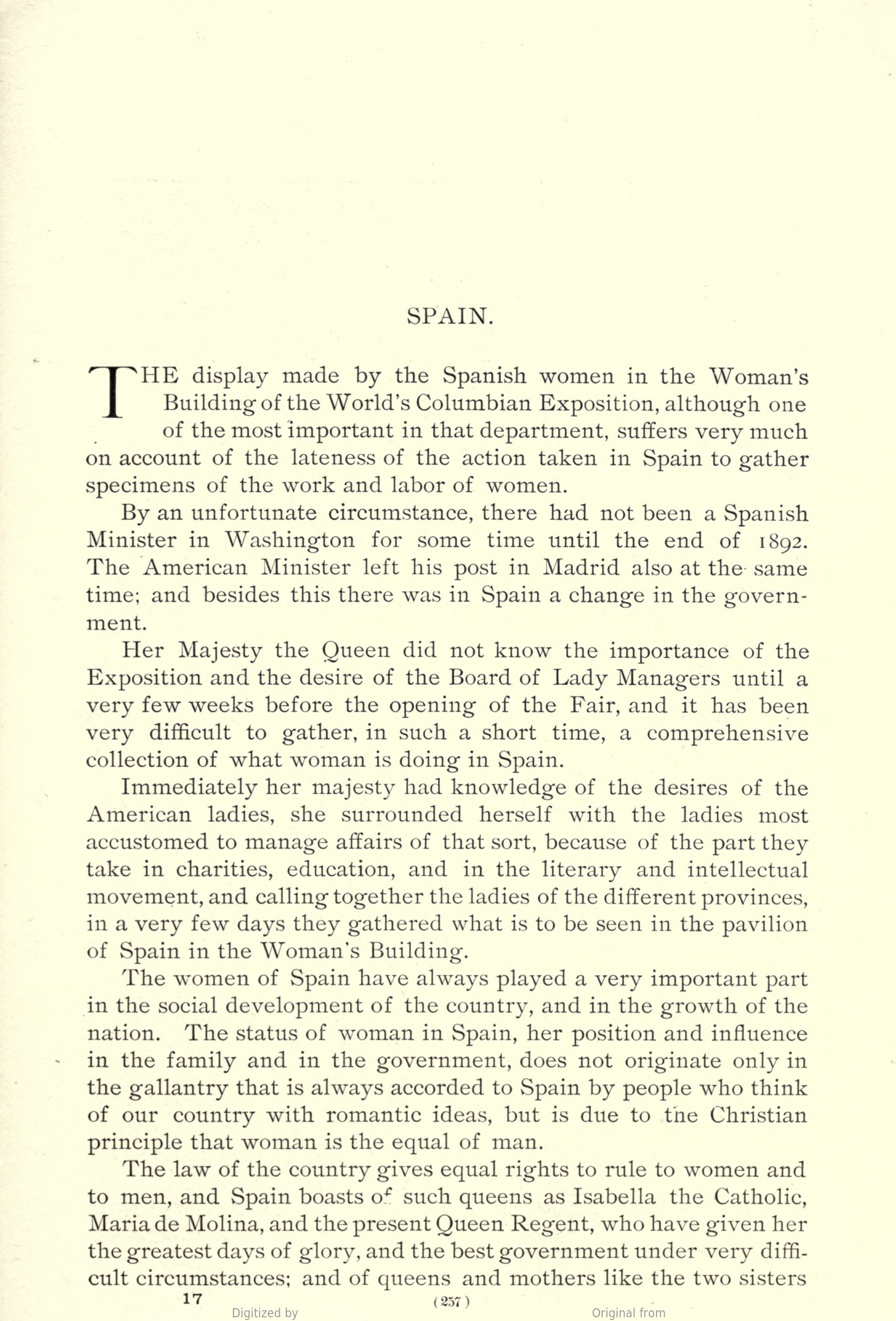
SPAIN.
THE display made by the Spanish women in the Woman's Building of the World's Columbian Exposition, although one of the most important in that department, suffers very much on account of the lateness of the action taken in Spain to gather specimens of the work and labor of women.
By an unfortunate circumstance, there had not been a Spanish Minister in Washington for some time until the end of 1892. The American Minister left his post in Madrid also at the same time; and besides this there was in Spain a change in the government.
Her Majesty the Queen did not know the importance of the Exposition and the desire of the Board of Lady Managers until a very few weeks before the opening of the Fair, and it has been very difficult to gather, in such a short time, a comprehensive collection of what woman is doing in Spain.
Immediately her majesty had knowledge of the desires of the American ladies, she surrounded herself with the ladies most accustomed to manage affairs of that sort, because of the part they take in charities, education, and in the literary and intellectual movement, and calling together the ladies of the different provinces, in a very few days they gathered what is to be seen in the pavilion of Spain in the Woman's Building.
The women of Spain have always played a very important part in the social development of the country, and in the growth of the nation. The status of woman in Spain, her position and influence in the family and in the government, does not originate only in the gallantry that is always accorded to Spain by people who think of our country with romantic ideas, but is due to the Christian principle that woman is the equal of man.
The law of the country gives equal rights to rule to women and to men, and Spain boasts of such queens as Isabella the Catholic, Maria de Molina, and the present Queen Regent, who have given her the greatest days of glory, and the best government under very difficult circumstances; and of queens and mothers like the two sisters
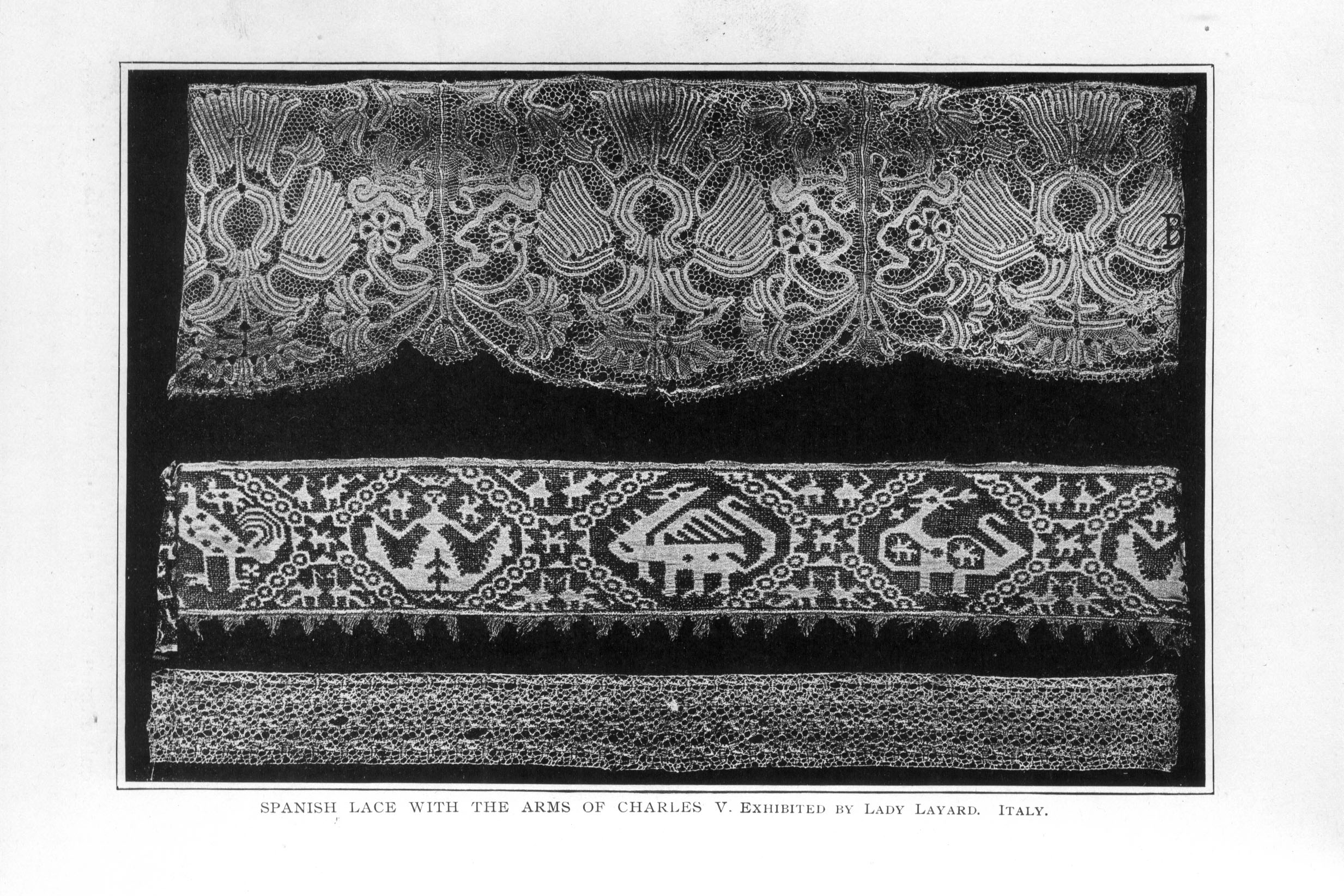
SPANISH LACE WITH THE ARMS OF CHARLES V.
EXHIBITED BY LADY LAYARD.
ITALY.
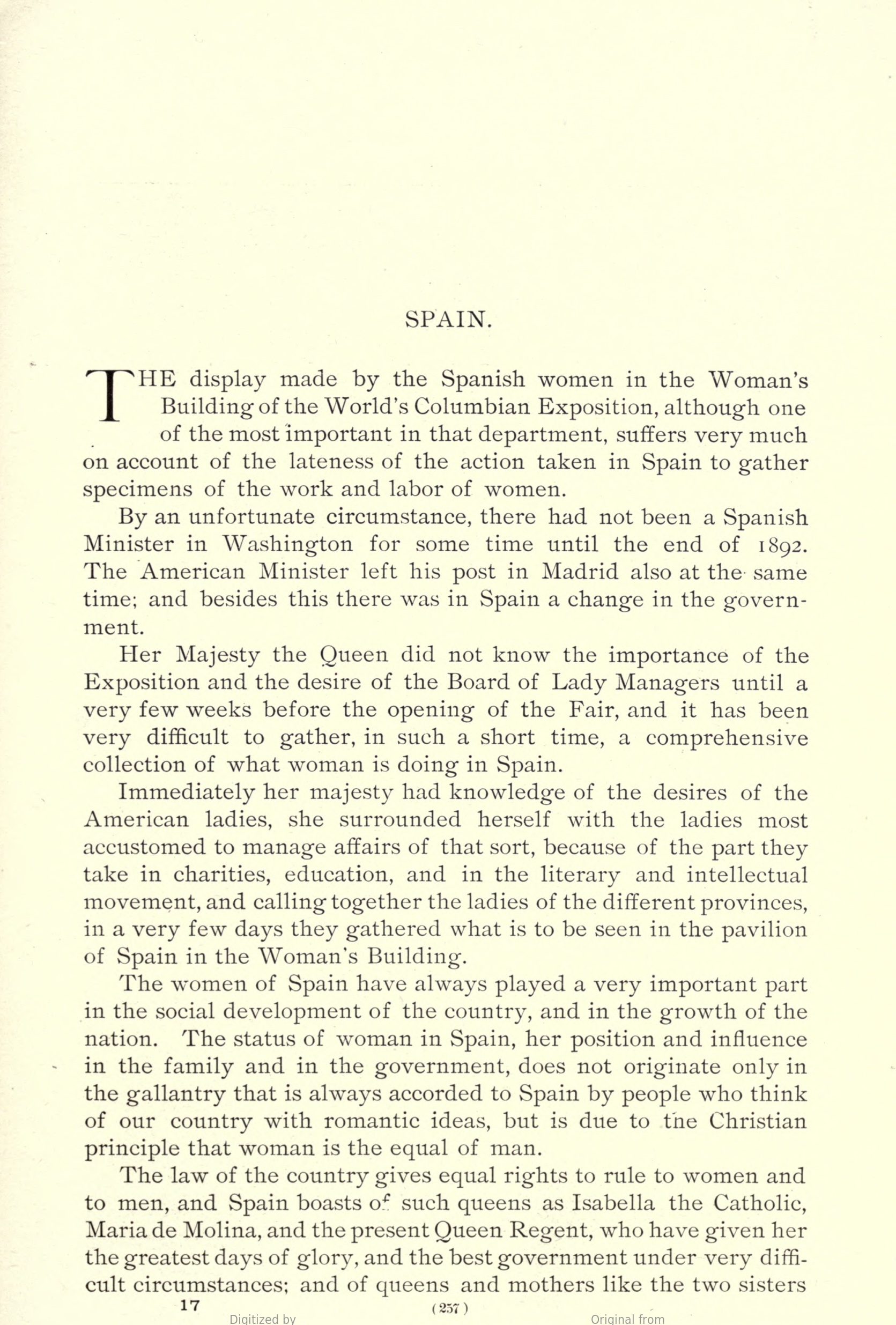
Blanca and Berenguela, mothers of two great kings and two saints, San Ferdinand of Spain and Saint Louis of France.
The law gives to woman such a prominent place in the family that we have what is called los gananciales—that is to say, the gains in marriage; this implies that the augmentation of the fortune of man and wife, during their married life, has to be equally divided, for the law wisely thinks that the wife and mother, by her economy, her making the home pleasant, and her devotion to the education of her children, plays a part as important as the husband in making the fortune of the family.
She has, after the death of her father, the patria potestad, and she has by right a portion equal to the one inherited by each of the children.
The short space given to each nation in this book makes it impossible to fully portray the importance of woman in the history of Spain, but it is easy to say, that although her character makes her principally a home-abiding woman, that although she is retiring and avoids publicity, and dislikes all that is noisy and seems to her immodest, she has all the rights of man except the political rights. She has the right to take the highest honors in the government universities, and avails herself of it; she takes an important part in the productive industry of the country, both as merchant and worker; she does creative work in literature and art, directs the education of children in the elementary schools, and is recognized as the most active worker in charities by the state, which has given to a commission of ladies the direction of the hospitals and asylums.
The women of Spain have always shown that they can do everything that men can do. They have fought the enemies of the country heroically, like Maria Pita and Augustina de Aragon; they have stood by their husbands and sons in sieges and battles, being a source of strength, and never a pretext for weakness. As far back as the fifteenth century we find such philosophers as Teresa de Cartagena, and learned women as Beatriz Galindo, the friend and adviser of the great Queen Isabella, who was called "La Latina" from her achievements in classic literature.
In the pavilion erected in the Woman's Building by the Spanish Commission, can be read the names of eight women who have been celebrated not only in Spain, but are known by every educated person all over the world: Santa Teresa de Jesus, one of the classic writers of Spanish literature, whose writings on philosophical matters have had a great influence; Oliva Sabuco de Nantes,
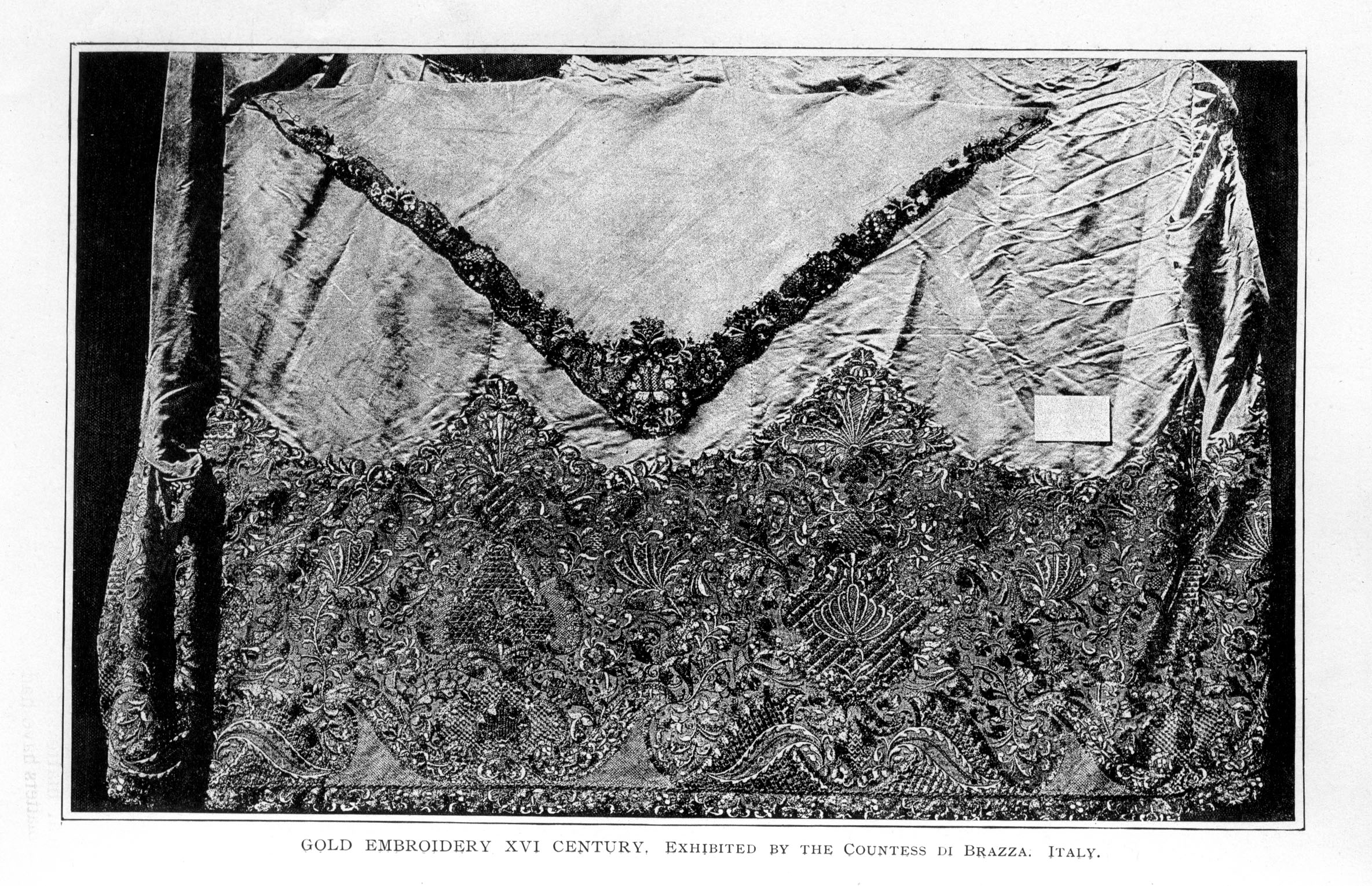
GOLD EMBROIDERY XVI CENTURY.
EXHIBITED BY THE COUNTESS DI BRAZZA.
ITALY.
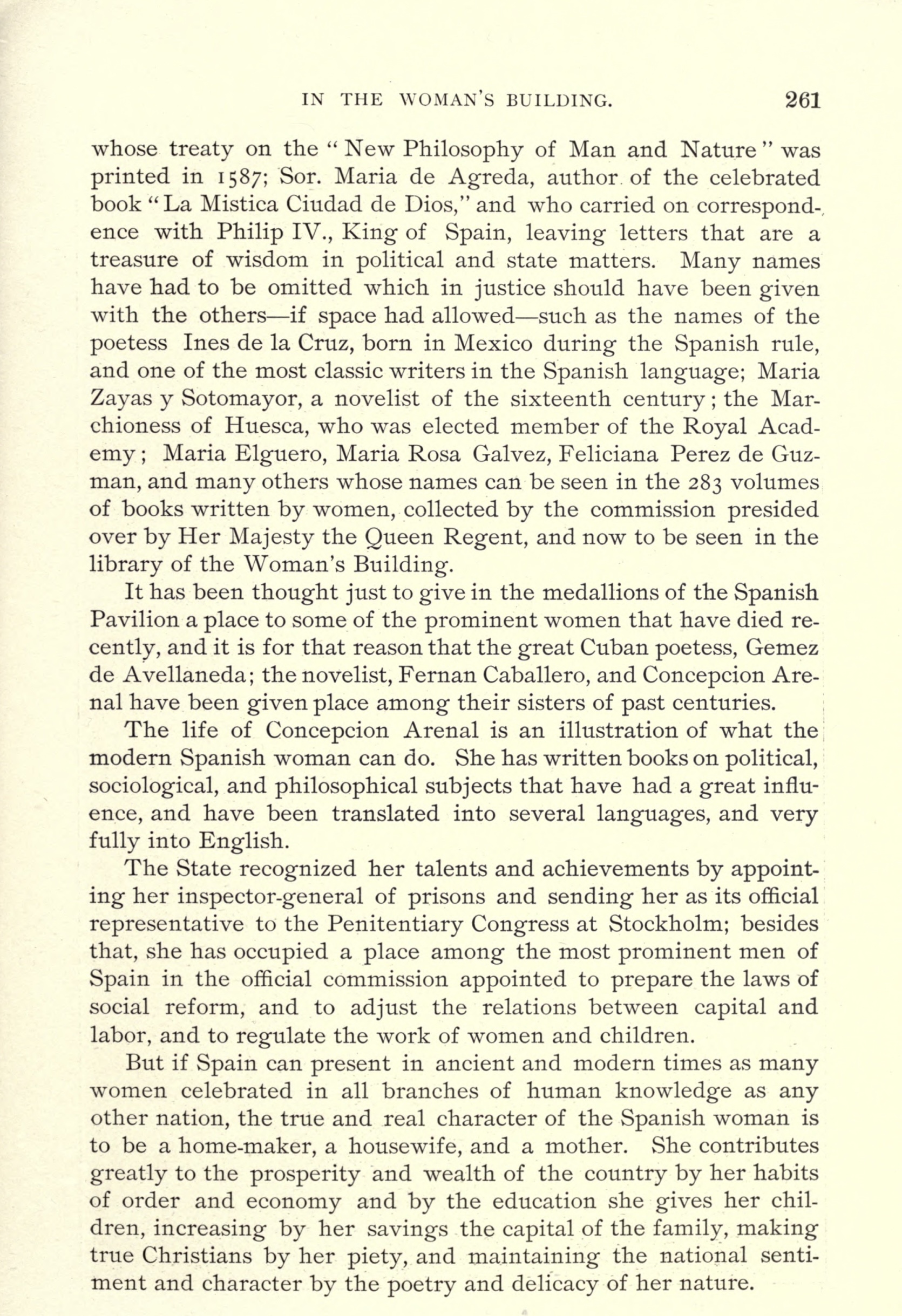
whose treaty on the "New Philosophy of Man and Nature" was printed in 1587; Sor. Maria de Agreda, author of the celebrated book "La Mistica Cindad de Dios," and who carried on correspondence with Philip IV., King of Spain, leaving letters that are a treasure of wisdom in political and state matters. Many names have had to be omitted which in justice should have been given with the others—if space had allowed—such as the names of the poetess Ines de la Cruz, born in Mexico during the Spanish rule, and one of the most classic writers in the Spanish language; Maria Zayas y Sotomayor, a novelist of the sixteenth century; the Marchioness of Huesca, who was elected member of the Royal Academy; Maria Elguero, Maria Rosa Galvez, Feliciana Perez de Guzman, and many others whose names can be seen in the 283 volumes of books written by women, collected by the commission presided over by Her Majesty the Queen Regent, and now to be seen in the library of the Woman's Building.
It has been thought just to give in the medallions of the Spanish Pavilion a place to some of the prominent women that have died recently, and it is for that reason that the great Cuban poetess, Gemez de Avellaneda; the novelist, Fernan Caballero, and Concepcion Arenal have been given place among their sisters of past centuries.
The life of Concepcion Arenal is an illustration of what the modern Spanish woman can do. She has written books on political, sociological, and philosophical subjects that have had a great influence, and have been translated into several languages, and very fully into English.
The State recognized her talents and achievements by appointing her inspector-general of prisons and sending her as its official representative to the Penitentiary Congress at Stockholm; besides that, she has occupied a place among the most prominent men of Spain in the official commission appointed to prepare the laws of social reform, and to adjust the relations between capital and labor, and to regulate the work of women and children.
But if Spain can present in ancient and modern times as many women celebrated in all branches of human knowledge as any other nation, the true and real character of the Spanish woman is to be a home-maker, a housewife, and a mother. She contributes greatly to the prosperity and wealth of the country by her habits of order and economy and by the education she gives her children, increasing by her savings the capital of the family, making true Christians by her piety, and maintaining the national sentiment and character by the poetry and delicacy of her nature.
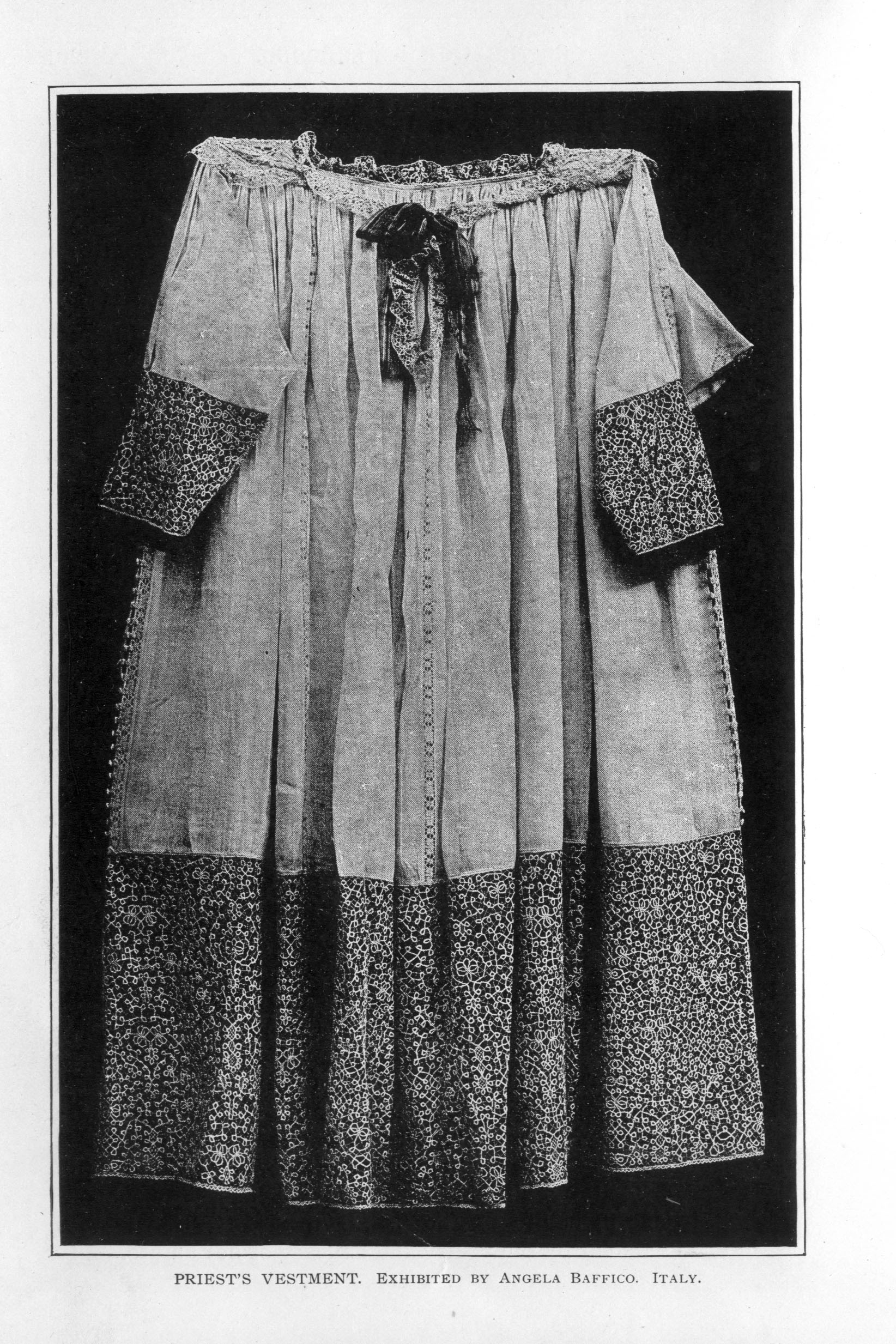
PRIEST'S VESTMENT.
EXHIBITED BY ANGELA BAFFICO.
ITALY.
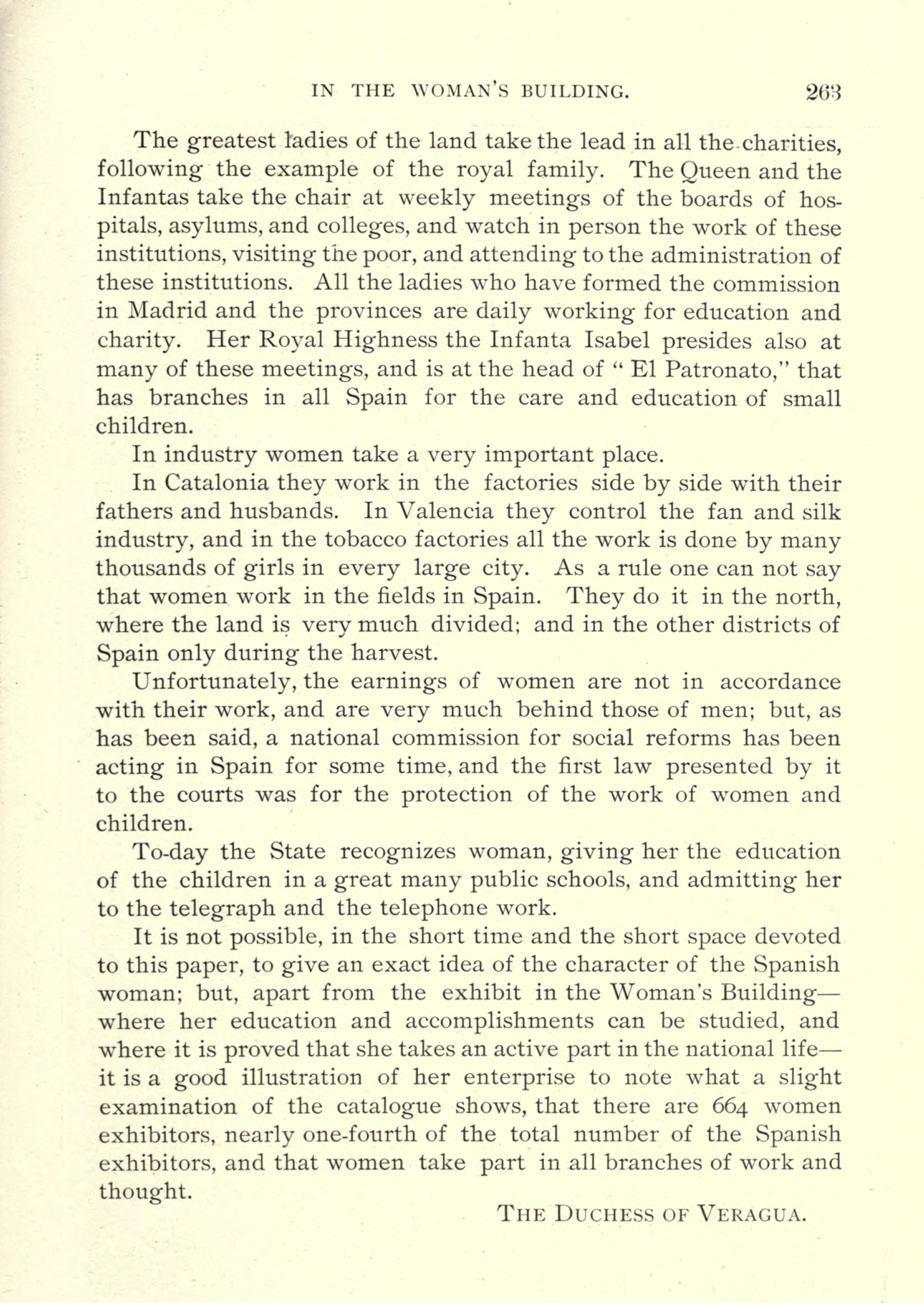
The greatest ladies of the land take the lead in all the charities, following the example of the royal family. The Queen and the Infantas take the chair at weekly meetings of the boards of hospitals, asylums, and colleges, and watch in person the work of these institutions, visiting the poor, and attending to the administration of these institutions. All the ladies who have formed the commission in Madrid and the provinces are daily working for education and charity. Her Royal Highness the Infanta Isabel presides also at many of these meetings, and is at the head of "E1 Patronato," that has branches in all Spain for the care and education of small children.
In industry women take a very important place.
In Catalonia they work in the factories side by side with their fathers and husbands. In Valencia they control the fan and silk industry, and in the tobacco factories all the work is done by many thousands of girls in every large city. As a rule one can not say that women work in the fields in Spain. They do it in the north, where the land is very much divided; and in the other districts of Spain only during the harvest.
Unfortunately, the earnings of women are not in accordance with their work, and are very much behind those of men; but, as has been said, a national commission for social reforms has been acting in Spain for some time, and the first law presented by it to the courts was for the protection of the work of women and children.
To-day the State recognizes woman, giving her the education of the children in a great many public schools, and admitting her to the telegraph and the telephone work.
It is not possible, in the short time and the short space devoted to this paper, to give an exact idea of the character of the Spanish woman; but, apart from the exhibit in the Woman's Building—where her education and accomplishments can be studied, and where it is proved that she takes an active part in the national life—it is a good illustration of her enterprise to note what a slight examination of the catalogue shows, that there are 664 women exhibitors, nearly one-fourth of the total number of the Spanish exhibitors, and that women take part in all branches of work and thought.
THE DUCHESS OF VERAGUA.